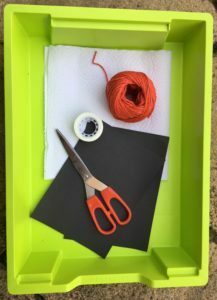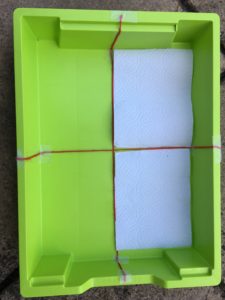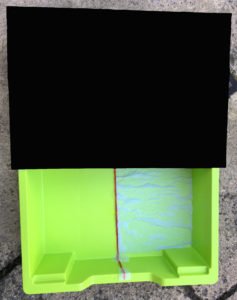Wandering woodlice
With 7 pairs of legs, woodlice are always on the move! Observe where they wander when you give them different environmental conditions to explore…
Do woodlice prefer light or dark conditions? Dry or damp? Can they locate and move themselves to an area suitable for their needs? Use a Gratnells tray to make a simple choice chamber and investigate the environmental preferences of woodlice.



You will need (per group of 4):
- 1 x Shallow Gratnells (F1) tray with lid
- String
- Scissors
- Sticky tape
- Equipment for collecting woodlice (spoons, brushes, pooters, bug pots, etc.)
- Kitchen towel
- Black card or similar
- A watch or timer
What to do:
- Use string, a ruler and tape to divide a Gratnells tray into four equal sections. Each section will have different conditions (dark and dry, dark and damp, light and dry, light and damp.)
- Some wet kitchen towel can be used to make two of the sections damp. Use thick black card to create a lid over half of the tray. This will make two dark sections. Don’t stick the lid down – you’ll need to be able to move it easily to observe the woodlice at different stages of the investigation with minimal disturbance
- Discuss how to collect the woodlice safely and with care. A small, clean paint brush or plastic spoon can be useful to gentry pick them up, or pooters if available.
- Collect the woodlice. For a fair test, each group should collect the same number.
- Introduce the woodlice to the tray. Decide together how to plan to do this – will they all be released into the centre, or will they be divided equally between the 4 areas?
- Allow the woodlice a few minutes to settle into their new surroundings. What do they do?
- Observe and record the number of woodlice in each chamber after 2, 5, 10 and 20 minutes. What do you notice? Draw up a table of results to record your findings. This data can be used later to create a graph.
- When the investigation is completed, carefully return all woodlice to the habitat they were found in.
What is happening?
Woodlice are crustaceans – part of the same group of animals as crabs, lobsters and shrimp. Crustaceans breathe using gills. In woodlice, these are found on the legs. For the gills to work effectively, they must be kept moist which is why woodlice prefer a damp habitat! Woodlice also feed on rotting vegetation which is also most likely to be found in damp places.
To navigate, woodlice have antennae which they use to smell – essential for helping them to locate a suitable habitat.
Any staining on the kitchen towel following the investigation isn’t urine. In fact, woodlice don’t urinate at all! They save water by secreting waste as ammonia gas through their exoskeleton – a bit like farting through your skin!
Other things to try…
- Would the results be the same if there were obstacles to negotiate? Take it further by adding a 4 section Gratnells insert into your tray with lolly stick ramps to allow movement of woodlice between areas.
- Try out your choice chambers on other inverebrates such as snails or slugs. Follow the same careful collection steps, make sure not to keep them out of their habitat for too long and return them to where you found them afterwards.
Health & Safety
As with all Gratnells Learning Rooms What’s In My Tray Activities. You should carry out your own risk assessment prior to undertaking any of the activities or demonstrations. In particular, care should be taken when handling soil and invertebrates to reduce risk of exposure to pathogens. Cuts or areas of broken skin should be covered. Hands should be washed thoroughly at the end of this activity.

